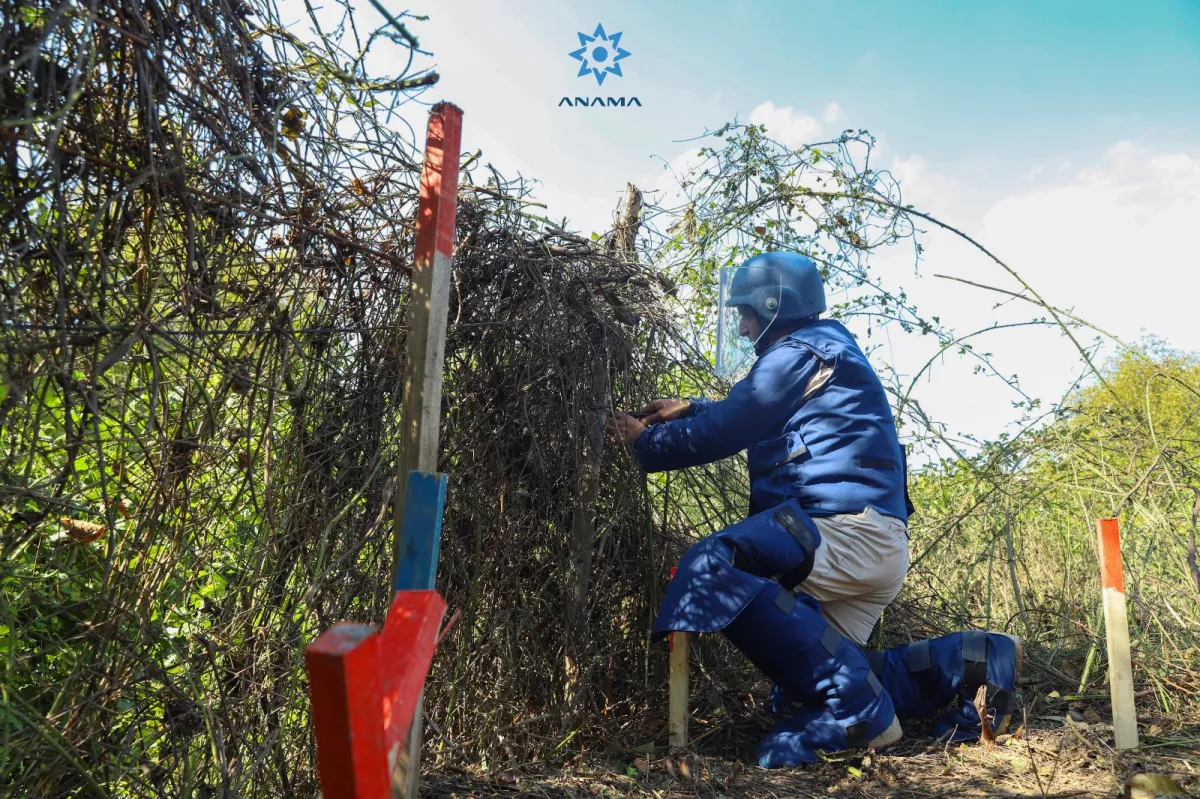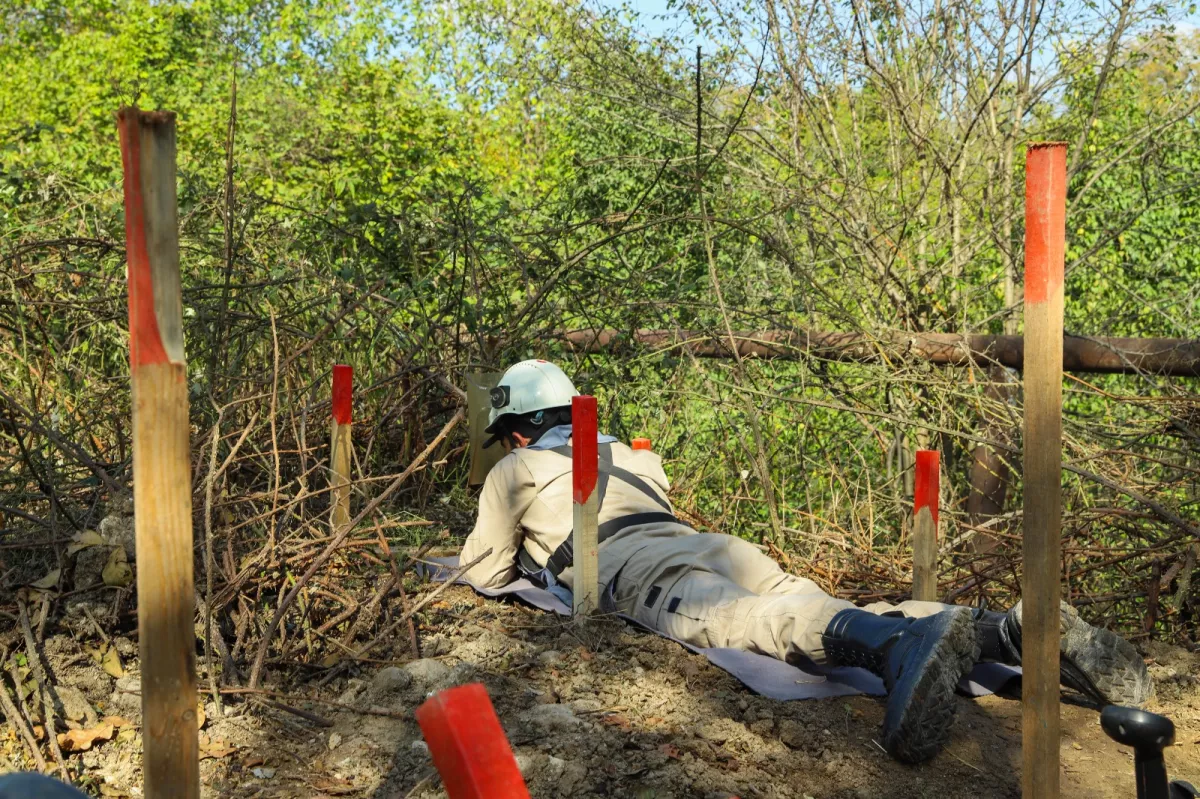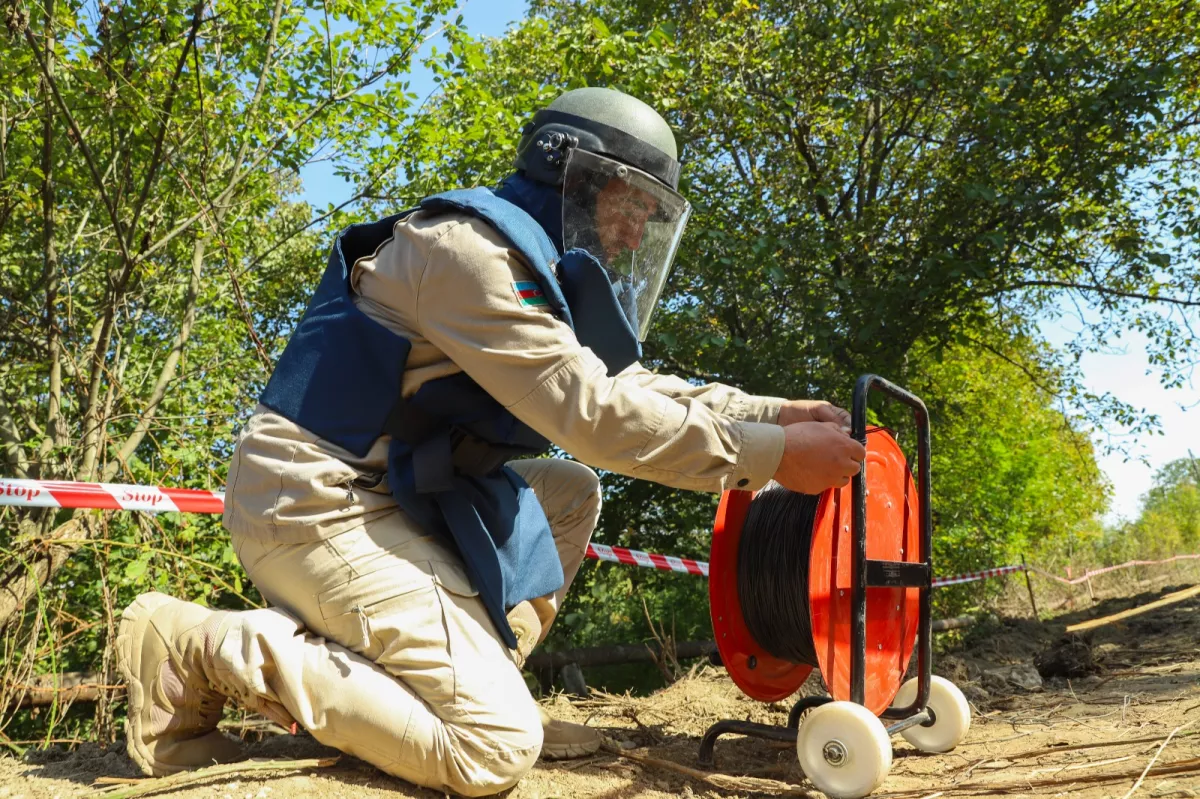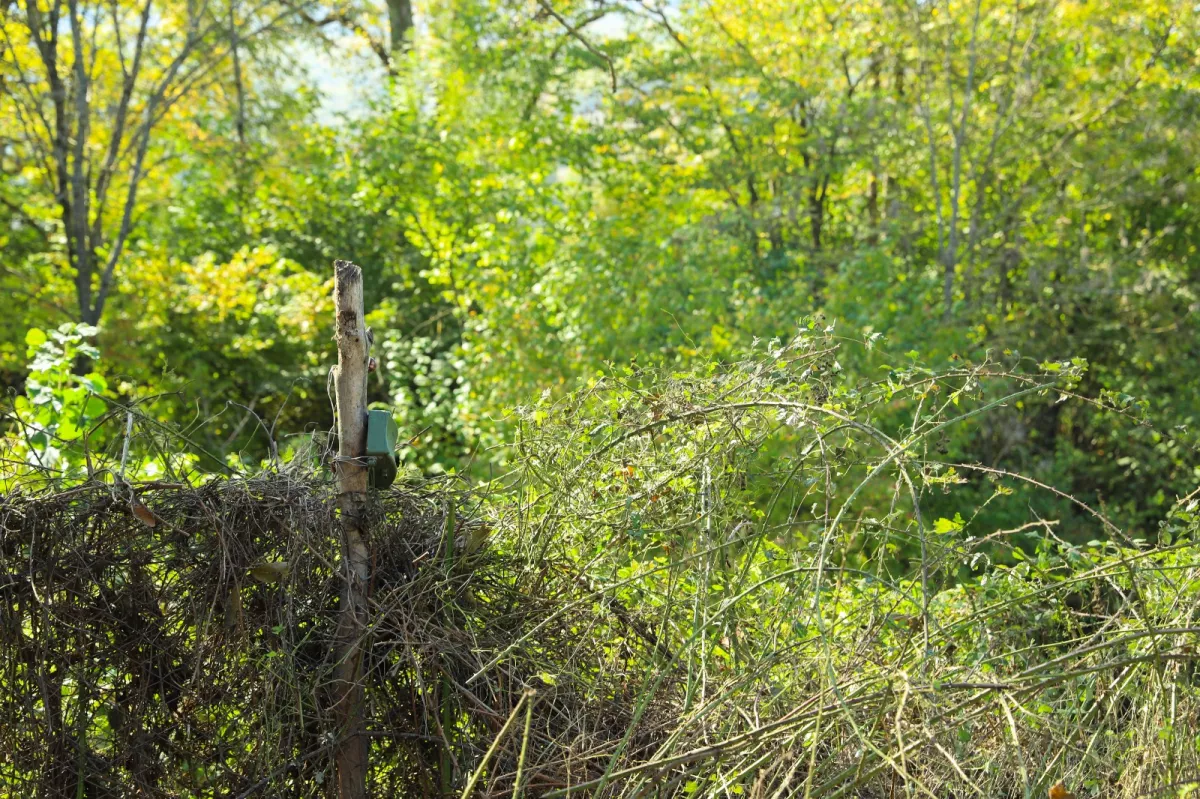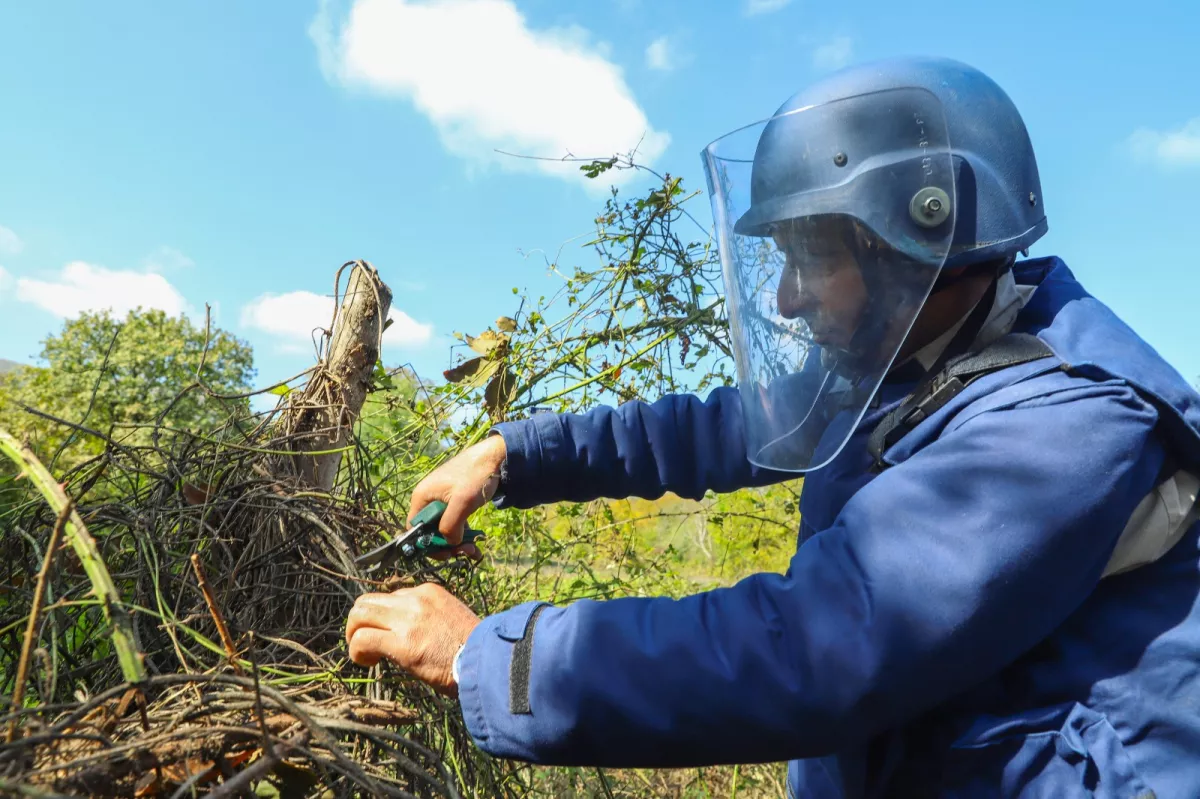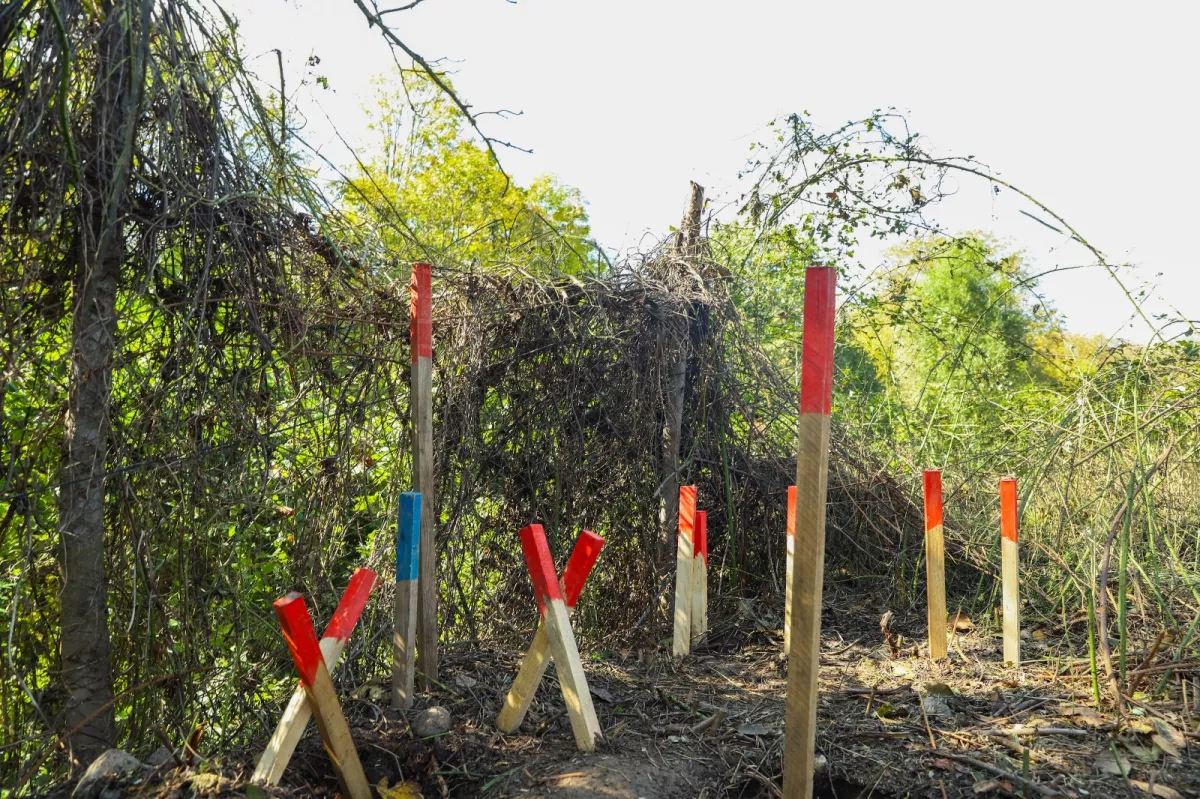Azerbaijani sappers defuse lethal Armenian mine hidden in Khojavand forest photo
The Azerbaijan National Agency for Mine Action (ANAMA) has discovered and neutralised an Armenian-made MON-50 antipersonnel mine in the forested area of Tagaverd village, located in the Khojavand district.
According to ANAMA’s statement to Caliber.Az, the explosive device was safely defused by sappers in full compliance with international demining protocols. The mine, which had been mounted on a tree in difficult terrain, was connected to another explosive device through a stretched wire, increasing its lethality and complexity.
The MON-50 is a fragmentation-type antipersonnel mine designed to project between 400 and 550 small cylindrical metal fragments, each roughly one centimetre in diameter, across a radius of 45–55 metres when detonated.
This latest discovery forms part of Azerbaijan’s comprehensive mine clearance campaign led by ANAMA. So far, approximately 140,000 hectares of land have been cleared of explosive devices. However, large tracts of territory remain contaminated, posing serious dangers to civilians and delaying the safe return of nearly 800,000 internally displaced persons (IDPs) forced to leave their homes during the decades-long conflict.
Since the end of the 2020 war, landmines have killed or injured around 400 people in Azerbaijan, adding to a total of more than 3,400 victims since the 1990s. The casualties include a significant number of women and children.
Armenia’s refusal to provide accurate minefield maps and its continued use of mines in civilian areas have deepened the humanitarian crisis.
Despite Azerbaijan’s major investments in demining, including the introduction of all-female demining teams, experts stress that sustained international assistance remains essential to accelerate clearance operations and ensure the safe rehabilitation of liberated territories.
By Tamilla Hasanova




